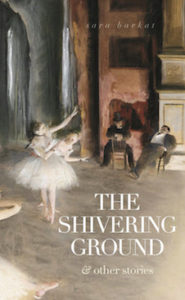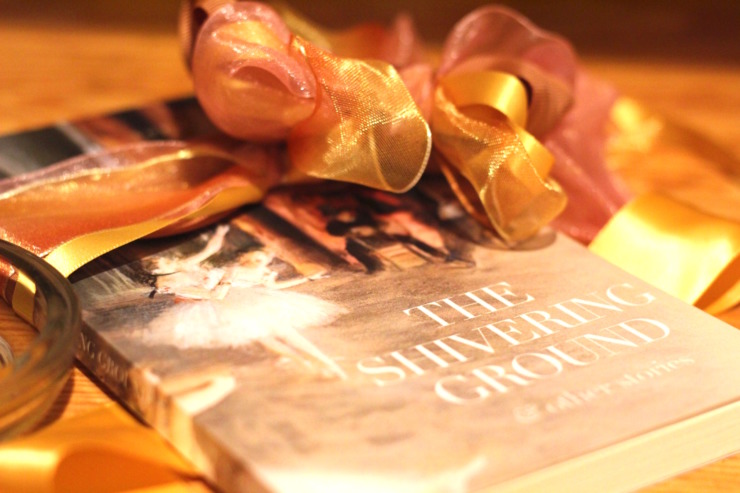All fiction is governed by a principle called willing suspension of disbelief. It means we readers know Elizabeth Bennett and Fitzwilliam Darcy are not real people locked in a complicated tangle of pride and prejudice, but while reading Jane Austen’s story, we pretend they are real — we willingly suspend our disbelief. We do this with every book we read, from The Cat in the Hat to War and Peace.
We have to suspend our disbelief a little bit more when we read a short story. There isn’t time for long histories and endless dialogue, as with a novel. There are no illustrations, as with a picture book. We only have a few pages, so the author has no space to dilly-dally.
For a short story of speculative fiction, we suspend our disbelief even more. Forget in-depth world-building. Forget detailed magic systems. The author gets to the main meal: plot, character, and theme, with a glaze of setting, probably one that is a little unusual.
I think short stories are the perfect introduction to sci-fi, fantasy, and other types of speculative fiction. You don’t have to invest in a fourteen-volume series or decipher every single hobbit song. You’re dumped, as the movie trailers used to say, IN A WORLD, for only a few pages with some interesting folks who have feelings and worries, just like us, but who exist in circumstances that are unlike ours. It’s a place to play. And play Sara Barkat does in her new collection of speculative fiction titled The Shivering Ground.
Her playgrounds are quantum physics, fairy tales, climate change thrillers, and original tales from her own imagination. Her stories aren’t technical, so don’t worry that you’ll have to put up with a version of Star Trek’s Scotty explaining how the spaceship’s engine works. These stories are filled with characters who are almost, but not exactly, like people you know, and the settings are similarly both familiar and strange. Each story is unique, so if one doesn’t catch your fancy, skip on to the next. It’s a lot of fun while giving readers a reason or two to shiver.
The previous sci-fi short story collection I read was purchased on audio, so I listened to one story per walk, allowing space-time to ruminate on each one. For The Shivering Ground, I read one story at a time, with a notepad and pencil nearby and jotted notes and questions. On one I wrote, “What is real?” I must have been jiving with one of the characters in “A Universe Akilter,” who says, “But, surely, I wondered, interpretability only goes so far.”
Because enjoying science fiction is not about interpreting the story — with a simple query and a search engine begging for an easy explanation. Good science fiction, like The Shivering Ground, pulls back the veil on the version of reality we accept unquestioningly and invites us to question it. Do I have to do things the way I’ve always done them? Can I do anything to change life as I know it?
During the pandemic, all of us have made these re-evaluations because we had to. Barkat’s short stories invite us to question what we think we know in a safe, healthful space. You know, before the apocalypse.
Suspend your disbelief. Suspend any of your trepidations about speculative fiction. Hop aboard The Shivering Ground and enjoy the ride. You’ll be thinking about the truth behind the stories long after you’re back in the here and now. Such as they are.
P.S. For fans of The Novelist, by our own L.L. Barkat, there is a one-sentence reference to the novella. It made my day.
_______________
Your Turn
1. What is a speculative story you have enjoyed? (It’s okay to reach back to the classic A Wrinkle in Time.)
2. Have you ever accidentally read speculative fiction, not realizing that’s what you were getting into? That happened to a book-loving friend who swears she won’t read sci-fi, but loved The Midnight Library, which is basically string theory with plot and characters.
3. Share your November pages. Sliced, started, and abandoned are all fair game.
November’s Pages
Poetry
And Still I Rise, by Maya Angelou
A Child’s Calendar, by John Updike, illus. Trina Schart Hyman
Picture Books and Early Readers
King Crow, by Jennifer Armstrong, illus. Eric Rohmann
The Midnight Ball, by Sara Barkat (Join us for Children’s Book Club, Friday, December 10!)
Middle Grade and YA
Once Upon a Camel, by Kathi Appelt, illus. Erick Rohmann
The Underneath, by Kathi Appelt, illus. David Small
Smorzando, by Elaine Kim (short story)
Grownups
Let Us Now Praise Famous Men, by James Agee, photography by Walker Evans
Breastmilk, by ‘Pemi Aguda (short story)
The Shivering Ground, by Sara Barkat
The Red Badge of Courage, by Stephen Crane
The Anthropocene Reviewed, by John Green (essays)
On Being Ill, by Virginia Wolff (essay)
Made Progress
The Discarded Image, by C.S. Lewis
Photo by heyFilbert, Creative Commons, via Flickr. Post by Megan Willome.
Browse more Reading Generously
I loved this book. As soon as I finished, I began reading it again.”
—David Lee Garrison, author of Playing Bach in the D. C. Metro
- Perspective: The Two, The Only: Calvin and Hobbes - December 16, 2022
- Children’s Book Club: A Very Haunted Christmas - December 9, 2022
- By Heart: ‘The night is darkening round me’ by Emily Brontë - December 2, 2022




Glynn says
The “speculative fiction” link you provided is helpful, because I’ve always been confused by what is called speculative fiction and what we’ve traditionally known as science fiction, horror, and fantasy stories. I come down to the belief it may not really matter to anyone except writers; readers like a well-written story and don’t necessarily mind how it’s classified.
It doesn’t also help when writers resist staying in their lane. Look at Ray Bradbury, who gave us both “Fahrenheit 451” and “Dandelion Wine.” Or George Orwell, with the allegory “Animal Farm” and the predictively futuristic “Nineteen Eighty-Four.” One of my all-time favorite stories is Arthur Clarke’s “Childhood’s End,” which is officially science fiction but is so well done that suspension of belief isn’t even a question.
Clearly, defining speculative fiction is a speculative venture.
My November reading:
Mystery
Forced Confessions by John Fairfax
A Lover Too Many by Roy Lewis
The World Cup Mystery by Peter Bartram
A Fatal Night by Faith Martin
Error in Judgment by Roy Lewis
Poetry
Sometimes I Never Suffered by Sean McCrae
The Courage It Takes by Kelly Chripczuk
Learning to Pray by Yahia Lababidi
Emmanuel Poems by Jody Collins
With a Polaroid Camera by Sarah Dickenson Snyder
Beautiful Raft by Tina Barry
Faith
Seeing Jesus by Robert Hudson
A Soldier and a Fisherman by Doug Spurling
Fiction
The Aviator by Eugene Vodolazkin
The Midnight Ball by Sara Barkat
Shakespeare Project
Edward III
Timon of Athens
Non-fiction
The Artful Dickens by John Mullan
Megan Willome says
Glynn, sometimes I think the term is most useful for publishers, who want to know how to market books. But many you mention defy categorization. I first came across the term “speculative fiction” because Margaret Atwood likes to use it for her stuff.
I need to put that Arthur C. Clarke one on my list.
And speaking of lists, thanks for contributing yours!
L.L. Barkat says
Megan, you totally said to Glynn what is always on Sara’s mind: publishers make distinctions readers don’t.
The distinctions can be useful, but they can also narrow possibility… for who gets published and what gets published.
It made me smile that you said Sara played, because *play* she did. And I think a big part of the playing was in dialog with exactly those distinctions—teasing their surface-y nature, testing them, and even turning them upside down.
(This, as well as the mirror nature of the final character to the character in The Novelist, made her sort of laugh at herself. Sometimes even when we are breaking molds, we are mirroring someone else’s mold-breaking, and she found that quite funny and maybe a bit ironic. 😉 Thus, the reference that made your day.)
And, yes, this! — Do I have to do things the way I’ve always done them?
Megan Willome says
🙂
Good writers are usually also good readers. May it be so for all publishers and marketers as well.